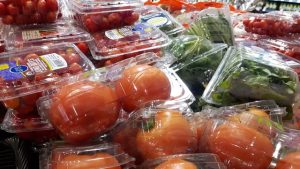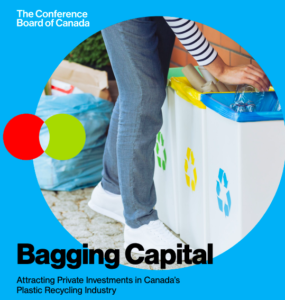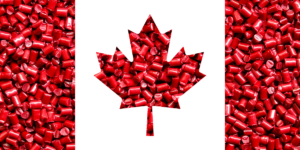Inside Toronto’s plastic problem
A low-waste movement to tackle the plastics crisis is gaining momentum, but we’re only in the beginning stages of realizing the dream of a disposable-free society
The Story
Canadians are addicted to plastic. In a single year, we generate a staggering 4.6 million metric tonnes of plastic waste. Shockingly, only nine per cent of plastics produced are recycled; the vast majority of it accumulates in landfills and leeches into the environment.
On June 10, Prime Minister Justin Trudeau announced plans for a country-wide ban on single-use plastics like straws, cutlery and other disposable items by 2021. The province has hired a special advisor on recycling and plastic waste, who recommends requiring producers to cover 100 per cent of the costs of recycling plastic waste they produce.
Over the past year, a low-waste movement has also gained tremendous momentum. Local pop-ups are selling package-free products and community groups are organizing beach cleanups. There are even “zero-waste influencers” on Instagram pushing a waste-free lifestyle.
Yes, they’re a thing, posting photos of how little garbage they generate on a weekly basis – all of it tucked neatly inside tiny glass mason jars to make the point that we need more than a recycling bin to do our part to save the planet from what is already a full-blown crisis.
Banning plastics that can’t be recycled will help, as will setting and enforcing more ambitious recycling collection standards. Governments, major corporations and consumers all need to be on board. It’s a tall order.
A deep dive into Toronto’s plastics problem reveals a complicated jumble underneath the mountains of trash.
OVERPRODUCTION + CONSUMPTION = POLLUTION
Everything that gets tossed into Toronto’s blue bins, whether it’s a plastic water bottle, blister pack, glass jam jar or pizza box, ends up in a nondescript building the size of three football fields in North York.
At the Canada Fibers material recovery centre, heaps of plastic, paper and metal chug up and down a series of industrial conveyor belts. Passing through magnetic screens and high-tech optical sorters, the material is sorted into different categories like cardboard and paper or high-density polyethylene (thick plastics like milk jugs and laundry detergent containers) and then compacted into neat bales to be sold to domestic or international markets.
Canada Fibers is the only place in the province that recovers and recycles its plastics on the same site, turning the material into tiny pellets to be sold to create new bottles and other products. But there’s a problem.
Michael Zabaneh, Canada Fibers’ director of integrated market development, says that in the last five years there has been an increase in the levels of contamination in recycling across North America. He says that up to a quarter of all plastics in North America are contaminated, which means they can’t be recycled.
“Most people are doing it right,” says Zabaneh. “But unfortunately, some are just throwing their recyclables in whatever bin is being collected that week.”
Organic waste is the biggest source of contamination. A peanut butter jar that hasn’t been rinsed, plastic containers with wilted mixed greens or a carton with just a splash of juice could potentially contaminate an entire bale.
Recycling plastic costs Toronto millions of dollars every year, but the revenue the city generates from selling recyclables has declined significantly. Now we’re running out of ways to divert the mess from our waste stream.
China, which used to receive nearly half of Canada’s plastic-waste exports, banned the import of 24 types of recyclables from Canada last year, citing environmental and health concerns and contaminated shipments.
Since the ban, Canada has shipped its recyclables to other countries, including Malaysia and Thailand, but Greenpeace Canada reports that most of that is either being burned or ending up in landfills “causing environmental and health problems.”
In a statement, Greenpeace spokesperson Sarah King says, “Canada must take a hard look at its overproduction, consumption and pollution of single-use plastic and the toll it is taking at home and abroad.”
Ontario Minister of the Environment, Conservation and Parks Jeff Yurek is expected to announce as early as this week that the province will be expanding the Extended Producer Responsibility (EPR) program, so that producers, importers and brands have to pay 100 per cent of the cost of recycling as in Quebec and British Columbia. In Ontario, producers are currently required to pay 50 per cent.
According to Stephanie Borrelle, a postdoctoral fellow at the University of Toronto researching the impact of different plastic mitigation strategies, EPR is likely “the single most powerful tool” we have to reduce plastic pollution.
“You create a system where plastic becomes valuable again because producers need to actually recover it,” she says. “At the moment, plastic is so cheap to make from virgin resources, there’s no incentive to do that. It’s easier to throw it away.”
As Ontario’s special advisor David Lindsay notes in his findings, industry supports a full shift to EPR because it gives producers a financial incentive where “innovators are awarded for the efficiencies and free-riders are penalized for not following the rules.”
This kind of circular economy could save Canada $500 million in annual costs, according to an action plan released earlier this year by the Canadian Council of Ministers of the Environment.
The idea is that if producers have to cover the full cost, they will be more likely to design products that are easily recyclable and made with less packaging.
Matt Keliher, the general manager of the city’s Solid Waste Management Systems, has been working with the province on readying Toronto for the transition and is optimistic the shift could lighten the load on recycling programs.
“It’ll give them [companies] an incentive to not [package] everything in six layers of plastic because now they have to bear the costs,” says Keliher. But we’re in the beginning stages of realizing the dream of a disposable-free society.
CURTAILING THE FLOW
The Trudeau government’s proposed ban of harmful single-use plastics follows a similar commitment from the EU and a movement of provinces and cities enacting their own bans.
A recent Nanos Research survey found that 56 per cent of Canadians support a ban of single-use plastics and that nearly a third would pay more for environmentally friendly alternatives.
In Toronto, the first phase of consultations exploring strategies to curtail the flow of single-use plastics was completed last year. It found that 75 per cent of some 20,000 residents surveyed support the mandatory reduction of plastic bags, black plastic and Styrofoam.
The second phase of consultations will begin next month with a final report on potential bylaws and regulations that city council can adopt to reduce plastics in early 2020.
“If we get a sense from the community that specific bans are what they’d like, we’d need to make sure to also [consider] it through a financial, social and equity lens as well,” says Keliher. “It needs to be a balanced approach. What we don’t want to see is a shift from one-single use item to another single-use item.”
For example, more companies, restaurants and brand names have begun transitioning to items perceived to be more environmentally friendly, like compostable cutlery or paper straws. But many single-use items touted as biodegradable or recyclable can’t actually be composted in Ontario and end up in landfill.
Loblaws, for example, sells President’s Choice “compostable” coffee pods, but they’re not accepted by any composting facility in Ontario, says Vito Buonsante, an environmental lawyer and plastics manager of the national advocacy group Environmental Defence.
“If an item can’t be composted in the city where you live, then it’s not compostable.”
Buonsante says not enough is being done to divert waste. Recycling programs need to be diverting more than 80 per cent of the plastic waste we produce, he says. And governments should be requiring plastics to be manufactured with a certain amount of recycled content.
As I listen to Buonsante over the phone, the realization of just how daunting a task that will be is staring me in the face. My desk is covered in single-use plastics.
From just the day’s takeout lunch there are two black plastic sushi containers, a tiny plastic vessel for soy sauce, the plastic bag it came packed in, plus a Starbucks iced coffee in a plastic cup. Yet in an attempt to be a conscious consumer, I purposefully didn’t grab a straw.
Rather than swapping a plastic straw for a paper version or changing the design of a plastic lid, experts agree that the only way out of this mess is to reduce the amount of waste we’re producing. There’s a reason why reduce is the first R in “reduce, reuse, recycle.” In that regard, it’s mostly individuals who have been doing the heavy lifting, not corporations.
CRISIS LAPPING UP ON OUR SHORES
When we think about plastics pollution, we think of massive islands of discarded waste floating in the middle of the Pacific Ocean. The Great Pacific Garbage Patch currently covers an area three times the size of France.
But plastic waste is washing up on Toronto’s shores too. Some 10,000 metric tonnes of plastic waste enter the Great Lakes every year, whether it’s litter left over from beach-goers or microplastics, the result of larger pieces of plastics breaking down.
Last year, Dora Attard founded Plastic Free Beach Toronto to organize cleanups of local beaches. The Beaches resident says she was stunned by the amount of plastic litter she’d find while walking her dog. “It would be the middle of January and there was still so much garbage. There was hardly anyone around, so it must have been coming in from the water,” says Attard.
For six months, starting last summer, Attard collected, saved and washed thousands of straws and water bottles, along with other common plastic items like coffee cups and lids, broken beach toys, balloons and lighters. She fashioned a portion of that waste into a two-metre-high water-bottle sculpture made out of 1,500 plastic bottles and some 3,000 straws, and displayed the sculpture at Balmy Beach last August.



